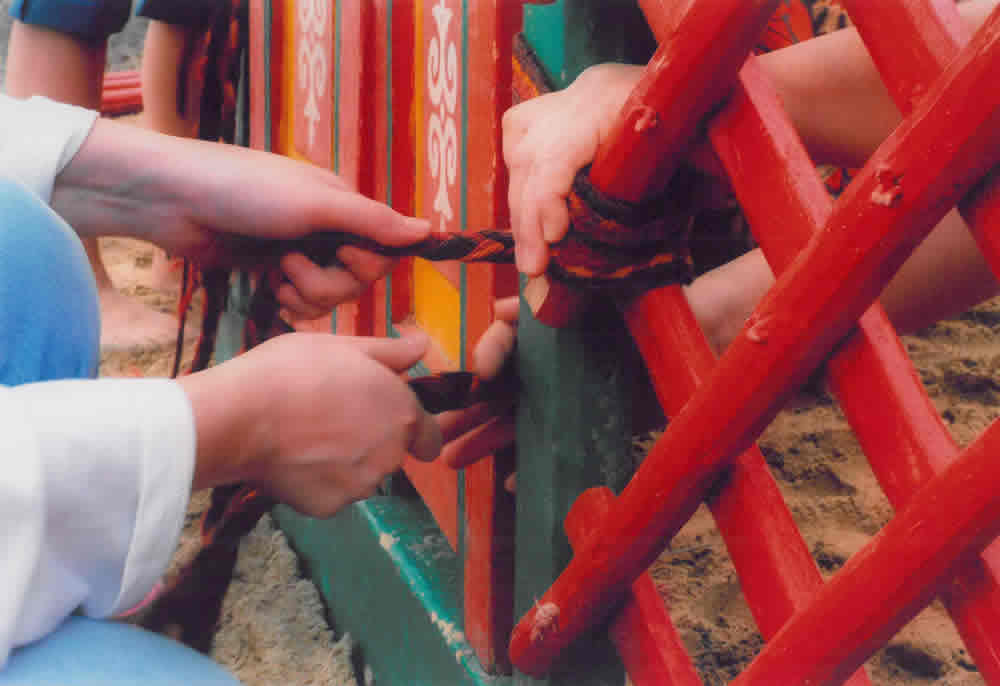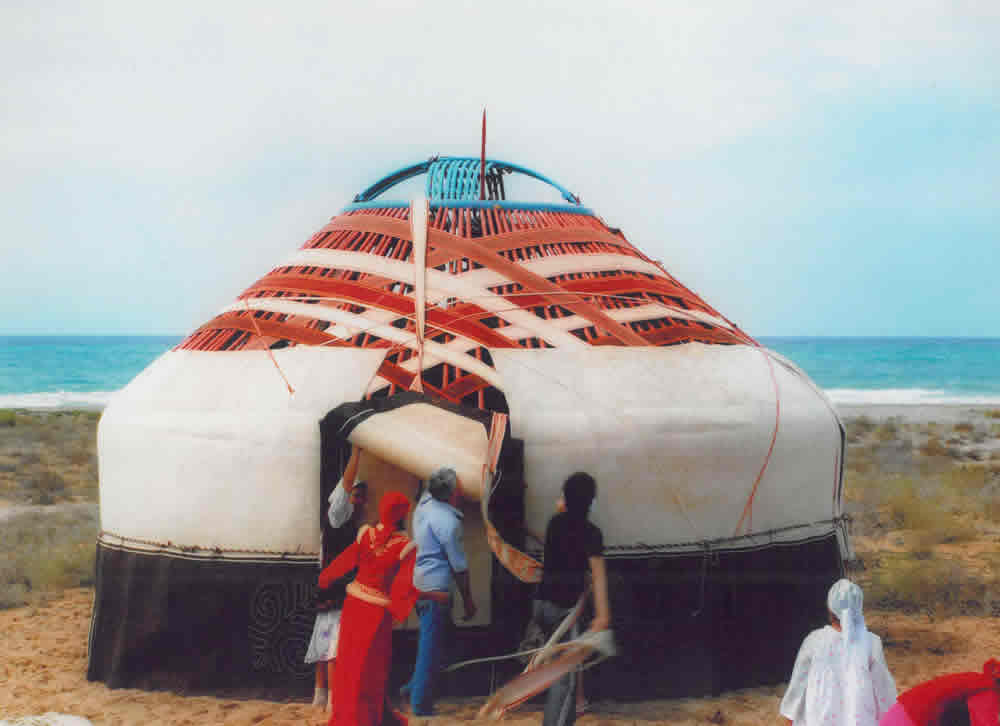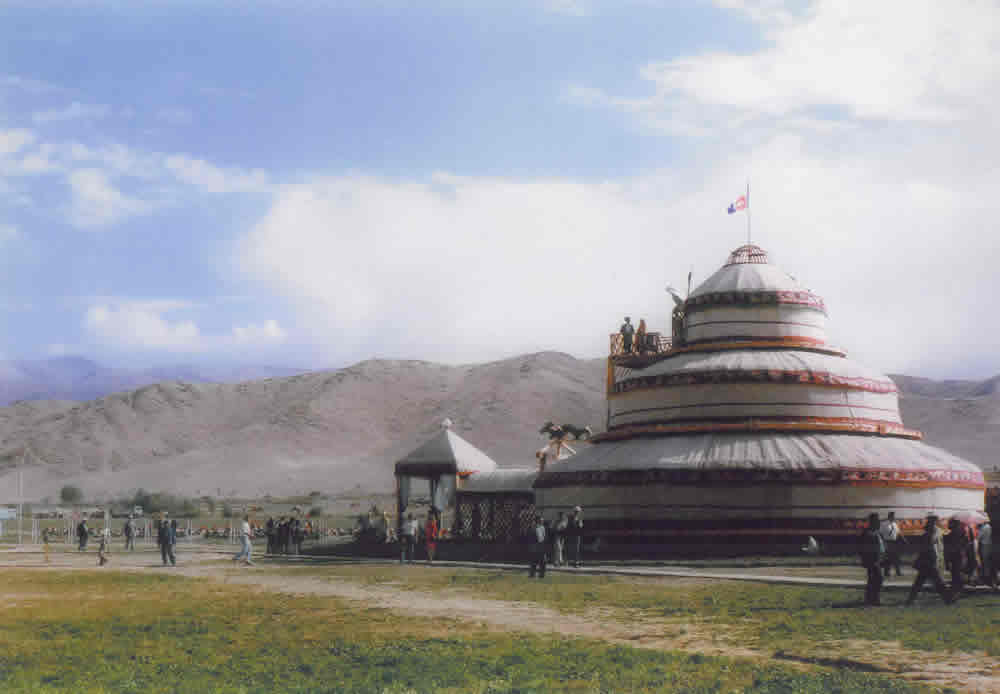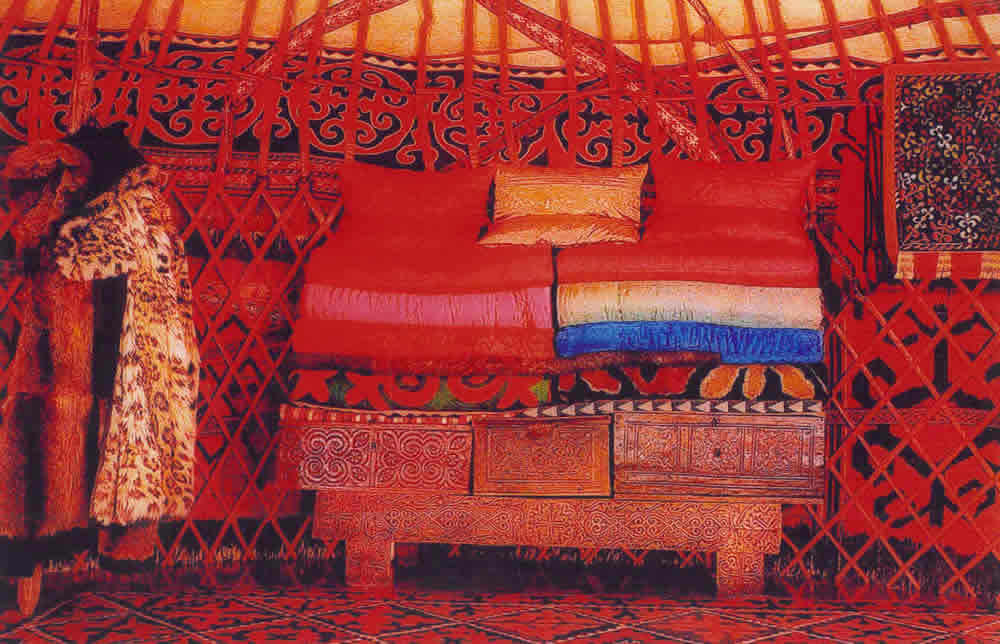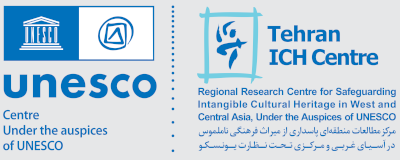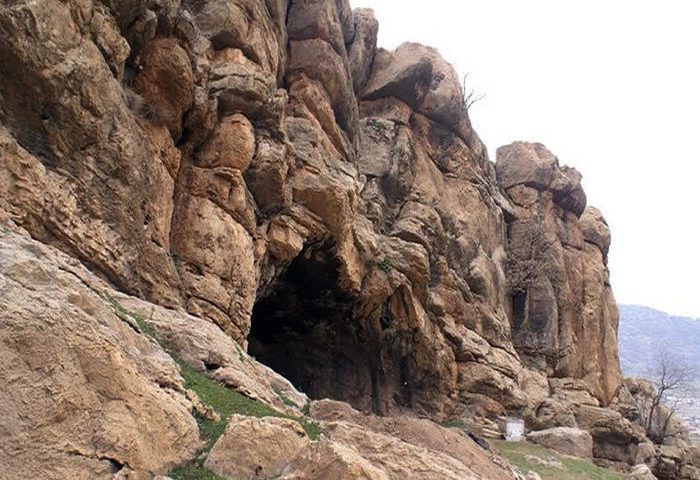The yurt is a nomadic dwelling used among the Kazakh and Kyrgyz peoples. It has a wooden circular frame covered with felt and braided with ropes, and can be easily assembled and dismantled within a short period of time. The bearers of yurt-making knowledge are craftspeople, both men and women, who produce yurts and their interior decorations. Yurts are made from natural and renewable raw materials. Men and their apprentices make the wooden frames by hand, along with wooden, leather, bone and metal details. Women make the interior decorations and exterior coverings, ornamented with traditional zoomorphic, vegetative or geometric patterns. As a rule, they work in community-based groups supervised by experienced women artisans, and employ weaving, spinning, braiding, felting, embroidering, sewing and other traditional handicraft techniques. Yurt creation involves the whole community of craftspeople, and fosters common human values, constructive cooperation and creative imagination. Traditionally, knowledge and skills are transmitted within families or from teachers to apprentices. All festivities, ceremonies, births, weddings and funeral rituals are held in a yurt. As such, the yurt remains a symbol of family and traditional hospitality, fundamental to the identity of the Kazakh and Kyrgyz peoples.
